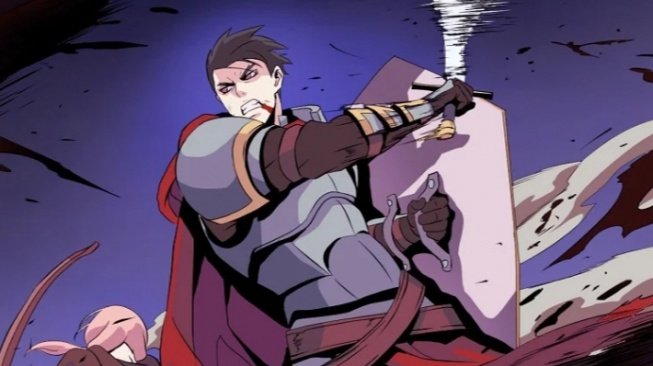In the domain of narration, the idea of “killing the legend” has stirred debate and fascinated crowds. This flighty account approach challenges the conventional legend’s excursion, asking makers to investigate strange regions and create convincing and provocative stories.
Breaking the Mold: Defying Conventional Narratives
The Hero’s Journey Reimagined
Generally, stories follow a legend’s excursion, where the hero faces difficulties, beats difficulty, and finally becomes successful. Notwithstanding, “killing the legend” disturbs this natural example. It welcomes narrators to investigate elective ways, undermining assumptions and keeping crowds as eager and anxious as can be.
Embracing the Element of Surprise
One of the principal allures of “killing the legend” lies in its capacity to amaze and stun the crowd. This story’s decision infuses a new viewpoint, forcing viewers to examine their assumptions about the legend’s power in a scene with unsurprising plots.
Crafting a Compelling Narrative
Establishing Emotional Connection
For a story to resonate, the crowd should produce a profound, close-to-home association with the characters. “Killing the Legend” can be an amazing asset in inspiring serious feelings, leaving an enduring effect on watchers who have put time and feelings into the hero’s excursion.
Developing Complex Characters
Character improvement becomes the overwhelming focus in a story where the legend might meet an unforeseen downfall. The supporting cast acquires unmistakeable quality, and their development becomes critical to maintaining the story’s momentum. This shift allows one to investigate the complex idea of characters beyond the legend.
Risks and Rewards
Challenging Audience Expectations
The decision to “kill the hero” is not without risks. Audiences may initially resist, attached to the comfort of a triumphant hero. However, this very resistance can catalyze discussions, sparking debates about the role of protagonists in storytelling.
Redefining Success in Storytelling
Progress in narrating is much of the time estimated by a story’s effect on its crowd. By testing ordinary standards, “killing the legend” widens the meaning of achievement, empowering makers to focus on advancement and creative articulation over adherence to laid-out equations.
Examples from the Creative Landscape
Game of Thrones – A Game-Changer
The TV series Round of Lofty Positions became inseparable from undermining assumptions, especially through its readiness to kill off significant characters, including heroes. This historical methodology added to the show’s social effect and set the trend for risky story decisions.
Literature’s Bold Moves
In writing, writers like George Orwell (“1984”) and William Golding (“Master of the Flies”) have shown the force of capricious endings, moving perusers to stand up to awkward bits of insight and reexamine their impression of chivalry.
Conclusion
Overall, “Killing the Legend” is a strong account device, provoking narrators to think past regular standards and giving crowds stories that blow some minds. While not without gambles, this approach could reshape narrating, preparing for additional creative and genuinely resounding accounts in the always-developing universe of amusement.
FAQs:
What does it mean to “kill the hero” in storytelling?
“Killing the Legend” alludes to a story method in which the hero, typically the focal person expected to overcome difficulties, meets a surprising downfall. This eccentric methodology aims to undermine crowd assumptions and investigate elective story directions.
Why would storytellers choose to kill off the main character?
Narrators might decide to kill off the main character to infuse the story with capriciousness. This striking move challenges traditional narrating standards, creating a feeling of authenticity and a profound effect that can reverberate with crowds on a more profound level.
How does “killing the hero” impact audience engagement?
The impact of killing the hero on audience engagement is profound. It can be a major area of strength for inspiring, shocking watchers, cultivating conversations about chivalry, and narrating. While at first jostling, this story decision frequently prompts a more paramount and provocative experience for the crowd.
Are there risks associated with “killing the hero” in storytelling?
Indeed, there are chances. Crowds may initially oppose such a takeoff from conventional narrating, as they are familiar with pulling for the legend’s prosperity. Notwithstanding, these dangers can likewise be valuable open doors, igniting discussions and rocking the boat, at last adding to the general effect of the account.
Can “killing the hero” be applied to different forms of media, such as books, movies, and TV shows?
Totally. The idea of “killing the legend” is flexible and can be applied to different media types. It has been effectively executed in writing, TV, and film, permitting makers in various mediums to explore different avenues regarding narrating shows and charming their crowds in special ways.
What does “kill the hero” mean in storytelling?
“Kill the hero” is a narrative technique in which the traditional hero, typically expected to triumph over challenges, unexpectedly meets their demise. This approach subverts conventional storytelling norms, introducing unpredictability and challenging audience expectations.


Pingback: Unveiling the Journey of Jeinz Macias: A Rising Star TadalaFilmtab -
Cialis 5 Mg Para Que Sirve
Cialis 5 mg prezzo cialis prezzo tadalafil 5 mg prezzo